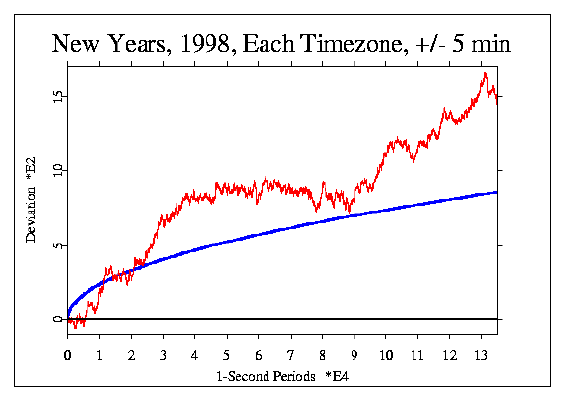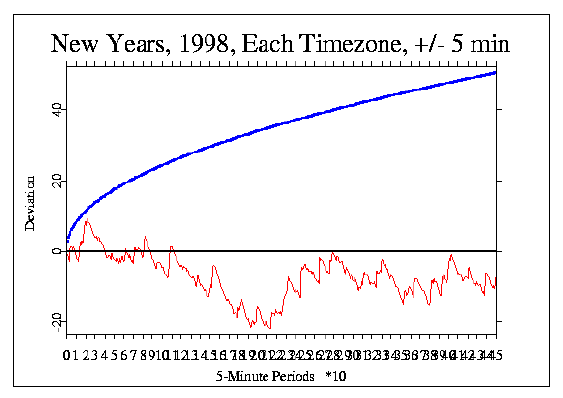| Current Results |
| New
Years, 1998
One of the predictions made for the New Year transition 1998 to 1999 was that a "ripple" of
celebration passing around the world as midnight reached each timezone would correlate with an
increase of the variability of the means. That is, we predicted a positive deviation of the
GCP data during a period of 10 minutes centered on midnight. These analyses required
development of relatively powerful tools, and were not done until August 1999, but they turn
out to be very interesting. The original specification was not explicit about the blocksize
for analysis, but two precedents were set explicitly by Bierman and Broughton, who both
specified the raw, second-by-second data. This precedent was followed for the formal analysis
of the 24 zone data (there are actually 25 zones in the data due to unique local
interpretations near the dateline), but several more explorations were also made,
using different block sizes, and also looking at a data split comparable to Broughton's,
albeit sequential rather than signal-averaged.
First, we examine the data as raw, second-by-second trials, corresponding to the formal prediction specification made by Bierman and Broughton. For this dataset Chisquare = 136430, df = 135000, probability = 0.00312.
These explorations make clear that the choice of blocksize is critical to the analytical outcome. This fact bears an implication that the choices made at the time of the prediction -- the definition and timing of the event, and the specification of the analysis blocks -- will determine the result. This, in turn, means that one possible contribution to the anomalous effect may come directly from the experimenters or other individuals making the predictions. (August, 1999, RDN)
|


